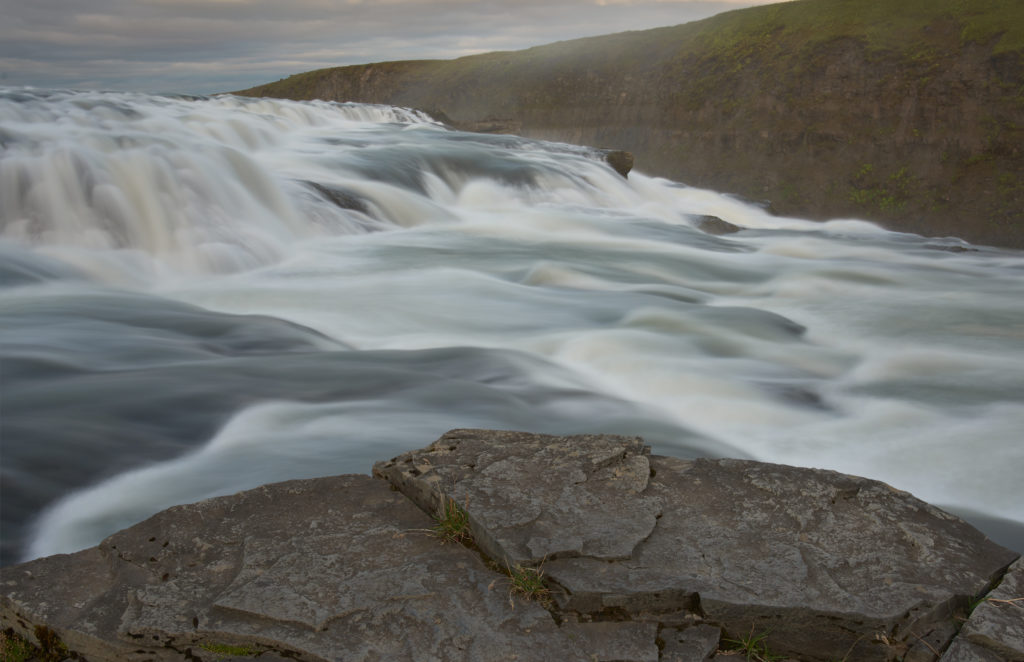
Gullfoss, Iceland. Nikon D810, Nikkor 28 f/1.4, at f/11, 4 s, ISO 50. Composite image with focus stack on foreground. 6-stop ND filter.
I never understood why waterfalls grab the hearts and minds of so many photographers. Go to any location that advertises a waterfall and it is guaranteed that there will be a large parking space, lots of cars, and buses with their engines idling. Masses of people, often out of shape, hike along a trail. The first action when the lookout point is reached is to pull out a camera and photograph the falls. In post-processing the images are cropped just above the pool, around which the fellow visitors had their picnic.
More recently, a popular thing seems to be “dying for a selfie”; people standing extremely close with their back on the brink of a fall, trying to get the best perspective of themselves leaning over the gorge.
The falls of Iceland are no exception in this respect. Unfortunately, the massive increase in visitors has resulted in viewing platforms being erected and areas being fenced off for security and flora reconstruction.
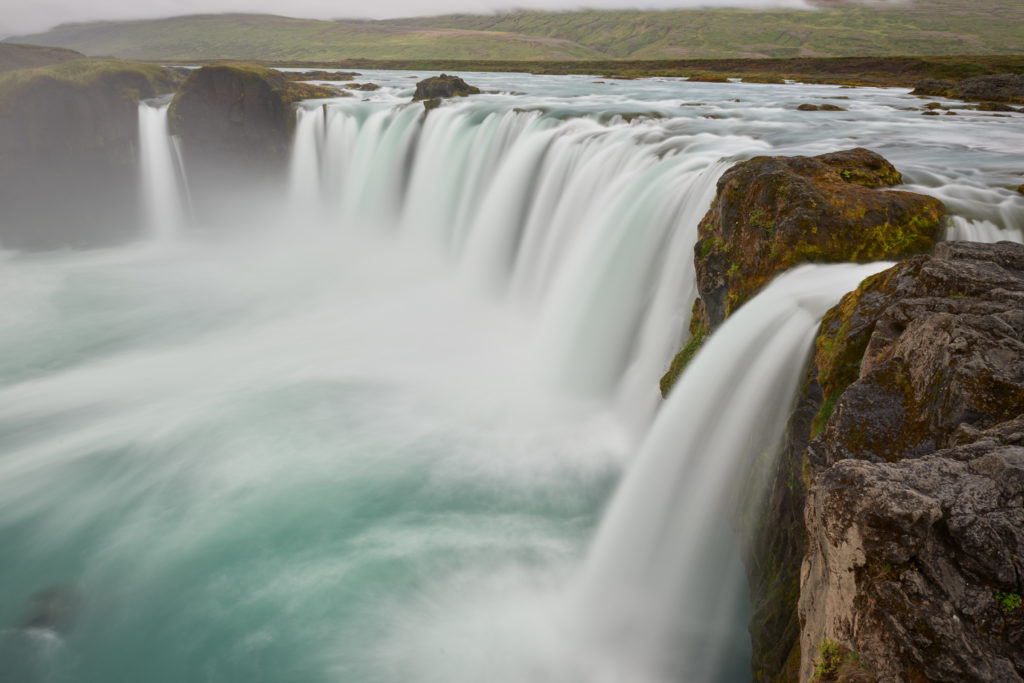
Godafoss, Iceland. Nikon D810, Nikkor 24-70 f/2.8, at 24 mm, f/11, 6 s, ISO 64. 6-stop ND filter.
Moreover, waterfalls just do not photograph well. In sunny weather, the contrast exceeds the dynamic range of most digital sensors. From a compositional point of view, the images are often unbalanced and there is no sense of scale, except if one refrains from cropping off the picnickers. But then, one person in a red jacked may add scale and depth. This is not the case for a busload full of people, wearing trash bags as protection against the spray.
Coming to Iceland you can’t possibly avoid the falls, some of them ranking among the largest in Europe and often embedded in beautiful landscapes, close to picturesque glaciers, black sand beaches, and lush valleys. Moreover, the “golden hour” turns into golden hours, so there is no rush. In mid august we had this wonderful light from 5:00 to 9:00 in the morning and 17:30 to 21:30 in the evening. But this implies getting up early if you want to escape the crowds.
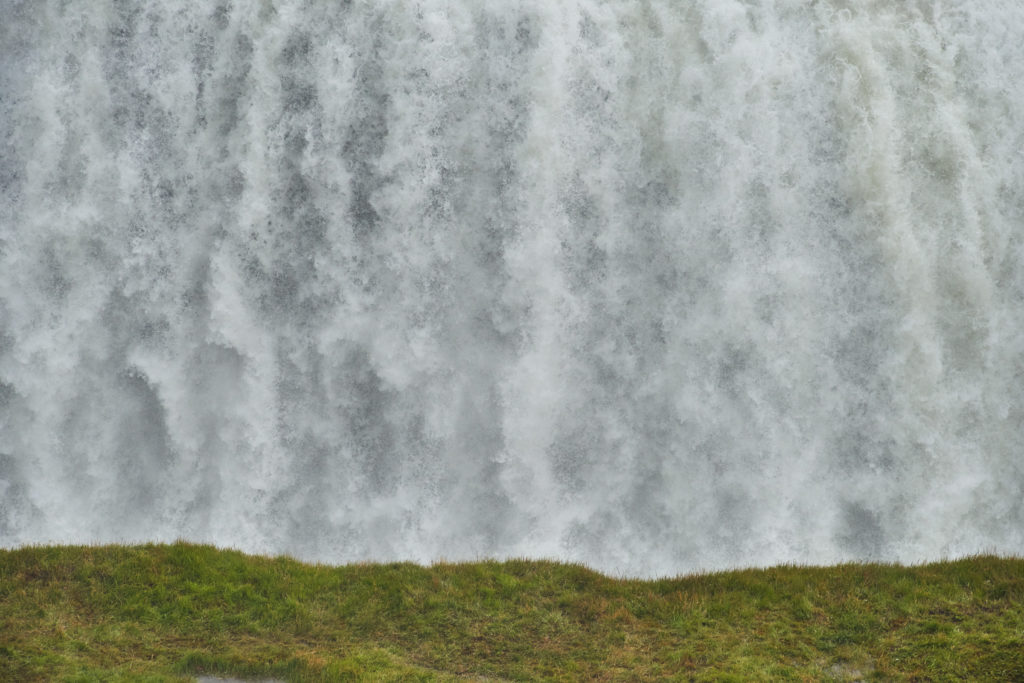
Gullfoss, Iceland. Nikon D810, Nikkor 70-200 f/2.8 plus 1.4 converter, at 280 mm, f/5.6, 1/5000 s, ISO 800. Composite image with focus stack on foreground.
So today’s photo essay is on the falls of Iceland; Fossography* so to say. From the photographic potential I would rank them as follows: Godafoss, Detifoss, Selfoss, Gullfoss (the most visited), Svartifoss, Skógafoss. I made good use of my 6-stop neutral density filter to blur the water, but also tried something more abstract using very short exposure times for freezing every spritz. Now I should return in winter. SR
Remark: I found it useful to bring a small towel to protect the camera and lens from the spray, protect the lens with a UV filter (if the ND filter is not mounted), and wipe the lens with a micro-fibre cleaning cloth between the shots. After about 5 iterations it was necessary to wipe the filter with a pre-moistened cleaning cloth sold for eyeglasses (and that I would be reluctant to use for the lens directly).
* “Foss” means “fall” in the Icelandic language.
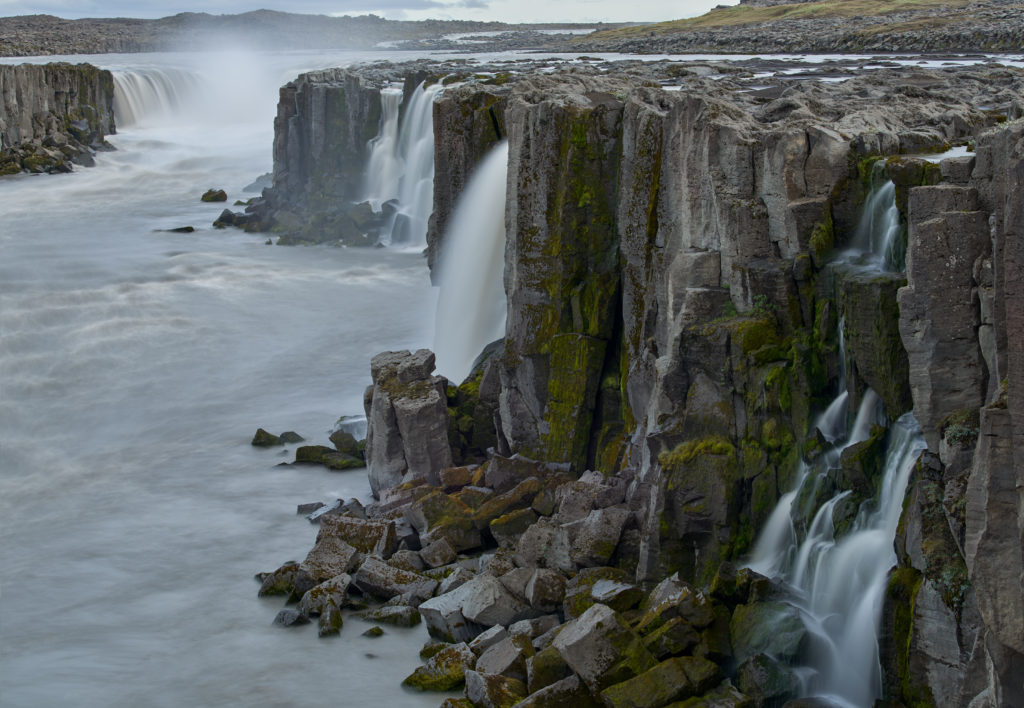
Selfoss, Iceland. Nikon D810, Nikkor 70-200 f/2.8, at 75 mm, f/10, 5 s, ISO 64. 6-stop ND filter.
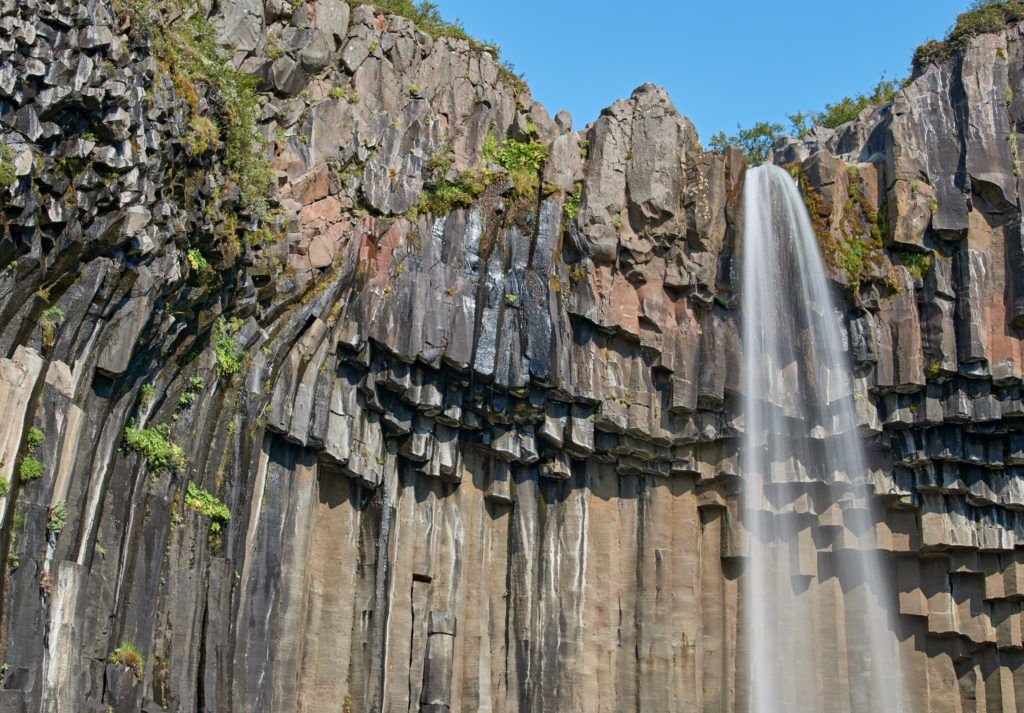
Svartifoss, Iceland. Nikon D810, Nikkor 70-200 f/2.8, at 70 mm, f/7.1, 1/1.6 s, ISO 64. 6-stop ND filter.
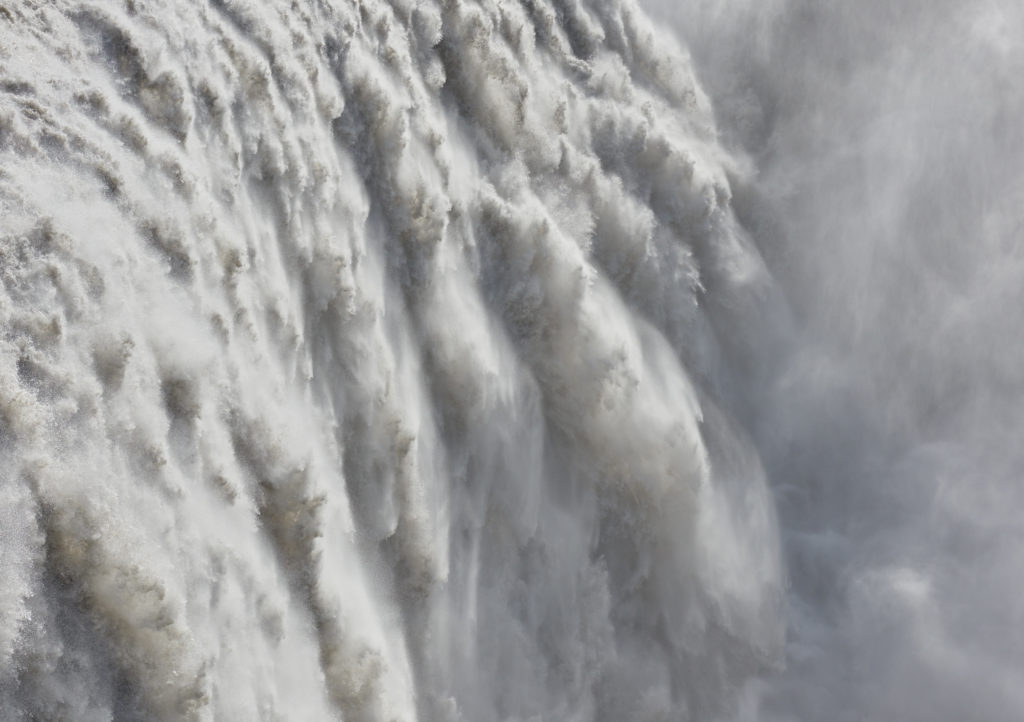
Detifoss, Iceland. Nikon D810, Nikkor 70-200 f/2.8, at 70 mm, f/8, 1/2000 s, ISO 400